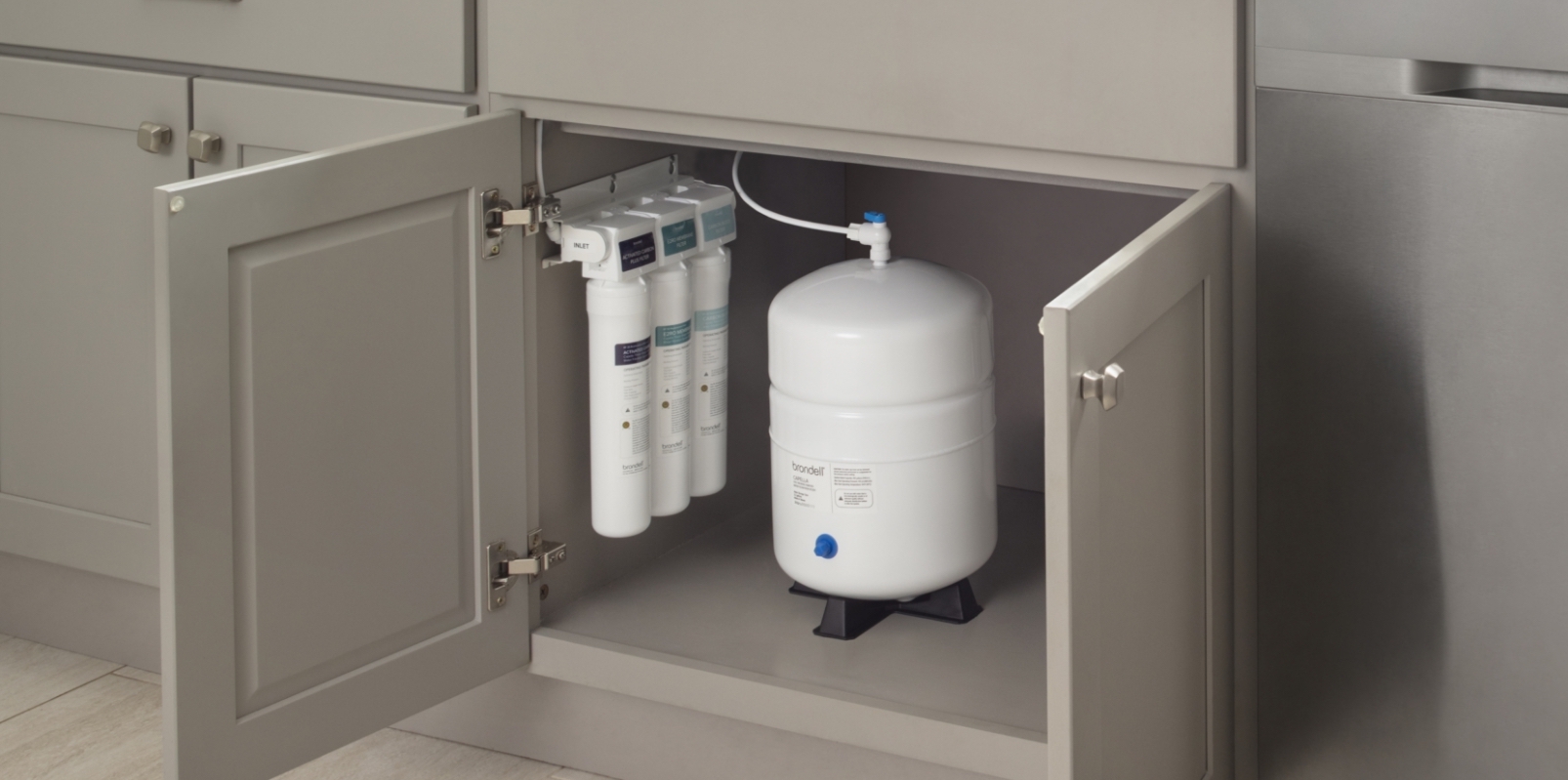
Think about your last drink of plain old tap water–did something taste a little off? It may look clear, but there are still a few contaminants that remain–the most likely of which are common chemical disinfectants like chloramines.
What exactly are chloramines? Chloramines are chemical compounds used to treat drinking water, usually formed when ammonia is added to chlorine. They are mixed into water at low enough levels that will kill germs.
Why does water have chloramines?
Municipal water contains harmful germs and bacteria, and public water officials have the responsibility of treating it to get to your tap as cleanly as possible. Chloramine use is nothing new–by around 1995 about 64% of all community water systems in the United States used chlorine to disinfect their water, according to the Center for Disease Control and Prevention (CDC).
Are chloramines harmful?
Well unfortunately, it's not a simple yes
or no
.
The CDC
states that
harmful health effects are unlikely to occur
when consuming small amounts of chloramine's less than 50 milligrams per liter (mg/L) in drinking water.
Meanwhile, the Environmental Protection Agency (EPA)
says there are only a few studies on the topic of chloramines and health–in other words, there are gaps in the research that need to be filled.
It's less of a gray area for those with underlying health conditions or compromised immune systems. For example, studies show that chloramines can be harmful to patients undergoing dialysis. That's why facilities must remove these chemical disinfectants from the water used in the dialysis process, according to the CDC.
An article from the Water Conditioning & Purification International Magazine (WC&P)
also states that,
people with weak immune systems, including transplant patients and people with AIDS, should not drink chloraminated water.
>
Where does that leave us? While chloramines help remove harmful bacteria to prepare water for drinking, they remain in our water—and that should give us pause. And while the presence of chloramines are permitted in drinking water in small amounts, health-conscious consumers may wish to reduce chloramines from tap water for greater peace of mind.
Do water filters reduce chloramines?

Not all water filter systems reduce chloramines. But some do, including our Capella and Coral water filtration systems.
Manufacturers will tell you which contaminants a water filter or filtration system reduces on the product website. Even if it says chloramines
or chloramine water filter
, be sure to check the product's Performance Data Sheet, which lists testing results (here's the Capella data sheet as an example). If a product doesn't have a performance data sheet, it's best to steer clear.
Also, keep an eye out for products that meet standards set by the National Sanitation Foundation (NSF) and American National Standards Institute (ANSI).
Why are these organizations important? Simply put, they establish standards for water filter certification. So, if a product states that they are certified to meet these standards, you can be confident that the contaminant reduction claims are backed by testing.
Standards are categorized into numbers, with each number representing a different type or range of contaminants. For chloramines, look for NSF/ANSI 42, which addresses taste and odor due to chlorine and chloramines, as well as sediment and other particulates.
It's also useful to know about the technologies that reduce chloramines. Here's a quick guide on those.
Activated carbon filters.
From single–stage filters to more complex reverse osmosis water filtration systems like ours, carbon filters are a reliable water filtration solution. Specifically, we're talking about activated carbon–carbon particles that have been ground and heated to become very porous and capable of holding onto unwanted contaminants in water.
For chloramine filtration specifically, a standard carbon filter is not always guaranteed to filter out chloramines–the water may need to sit in the filter longer, or a higher quality of activated carbon may be needed. Again it is best to look into the product's performance data sheet or its NSF/ ANSI 42 test data.
Reverse osmosis.
Reverse osmosis (RO) is a water filtration process that pressurizes and pushes unfiltered water through a semipermeable membrane, physically separating the contaminants from the water.
So does reverse osmosis filtration reduce chloramines? Again, it really depends. Look for the performance data sheet of any product you're considering, or look for that NSF/ ANSI 42 test data.
Multi–stage filtration systems like our Capella incorporate both carbon filters and reverse osmosis membrane filtration into a three-stage system, which reduces chloramines from drinking water.
All roads lead to cleaner water.

Chloramines are a crucial component in the delivery of drinking water– but there is always a choice to remove it for healthier hydrating.
Investing in a quality system that filters chloramines and contaminants in our water is an investment in greater health and wellness– and that is always a good choice to make.
